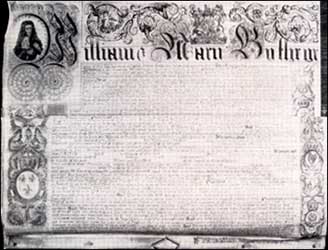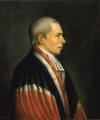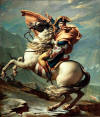1642
Oliver Cromwell (below) is financed by the money changers for the purposes of fomenting a revolution in England, and allowing them to take control of the money system again. After much bloodshed, Cromwell finally purges the parliament, overthrows King Charles I and puts him to death in 1649.
The money changers immediately consolidate their power and for the next few decades plunge Great Britain into a costly series of wars. They also take over a square mile of property in the center of London which becomes known as the City of London.1694
Following a costly series of wars over the last 50 years, English Government officials go, cap in hand, to the money changers for loans necessary to pursue their political purposes. The money changers agree to solve this problem in exchange for a government sanctioned privately owned bank which could issue money created out of nothing.
This was deceptively named the, "Bank of England," for the sole purpose of duping the general public into believing it was part of the government, which it was not.

Like any other private corporation the Bank of England sold shares to get started. The private investors, whose names were never revealed, were supposed to put up £1,250,000 in gold coins to buy their shares in the bank, but only £750,000 was ever received. Despite that the bank was duly chartered and began loaning out several times the money it supposedly had in reserves, all at interest.
 Although the Bank of England's private investors were never revealed, one of the Directors, William Paterson (right) stated,
Although the Bank of England's private investors were never revealed, one of the Directors, William Paterson (right) stated,
Furthermore the Bank of England would loan government officials as much of the new currency as they wanted, as long as they secured the debt by direct taxation of the British people. The Bank of England amounted to nothing less than the legal counterfeiting of a national currency for private gain, and thus any country that would fall under the control of a private bank would amount to nothing more than a plutocracy."The Bank hath benefit of interest on all monies which it creates out of nothing.”
1698
Following four years of the Bank of England, their plan to control the money supply had come on in leaps and bounds. They had flooded the country with so much money that the Government debt to the Bank had grown from the initial £1,250,000, to £16,000,000, in only four years. That's an increase of 1,280%.Why do they do it? Simple, if the money in circulation in a country is £5,000,000, and a central bank is set up and prints another £15,000,000, stage one of the plan, sends it out into the economy through loans etc, than this will reduce the value of the initial £5,000,000 in circulation before the bank was formed. This is because the initial £5,000,000 is now only 25% of the economy. It will also give the bank control of 75% of the money in circulation with the £15,000,000 they sent out into the economy.
This also causes inflation which is the reduction in worth of money borne by the common person, due to the economy being flooded with too much money, an economy which the Central Bank are responsible for. As the common person's money is worth less, he has to go to the bank to get a loan to help run his business etc, and when the Central Bank are satisfied there are enough people with debt out there, the bank will tighten the supply of money by not offering loans. This is stage two of the plan.
Stage three, is sitting back and waiting for the debtors to them to go bankrupt, allowing the bank to then seize from them real wealth, businesses and property etc, for pennies on the dollar. Inflation never effects a central bank in fact they are the only group who can benefit from it, as if they are ever short of money they can simply print more.
1800
In France, the Bank of France was set up. However Napoleon (below) decided France had to break free of the debt and he therefore never trusted this bank. He declared that when a government is dependent on bankers for money, it is the bankers and not the government leaders that are in control.
He stated,
"The hand that gives is among the hand that takes. Money has no motherland, financiers are without patriotism and without decency, their sole object is gain."
1908
With the widespread financial panic over, J. P. Morgan was hailed as a hero by the then President of Princeton University, Woodrow Wilson (right), who even crassly or arrogantly stated,"All this trouble could be averted if we appointed a committee of six or seven public spirited men like J. P. Morgan, to handle the affairs of our country."
President Theodore Roosevelt had also signed into law, following the financial panic, a bill creating the, "National Monetary Commission."
This commission was supposed to study the banking problem and make recommendations to Congress. Naturally, the commission was packed with J. P. Morgan's friends and cronies.
The chairman was Senator Nelson Aldrich (right) from Rhode Island, and he represented the Newport Rhode Island homes of America's richest banking families. His daughter married John D. Rockefeller Jr., and together they had five sons (including Nelson who would become Vice President in 1974 and David who would become Head of the Council on Foreign Relations).
Following the setting up of this National Monetary Commission, Senator Aldrich immediately embarked on a 2 year fact finding tour of Europe, where he consulted at length with the private central bankers in England, France, and Germany, or rather Rothschild, Rothschild, and Rothschild.
The total cost of this 2 year trip to the American taxpayer? $300,000. Yes, three hundred thousand dollars, that is not a misprint!



























































No hay comentarios:
Publicar un comentario